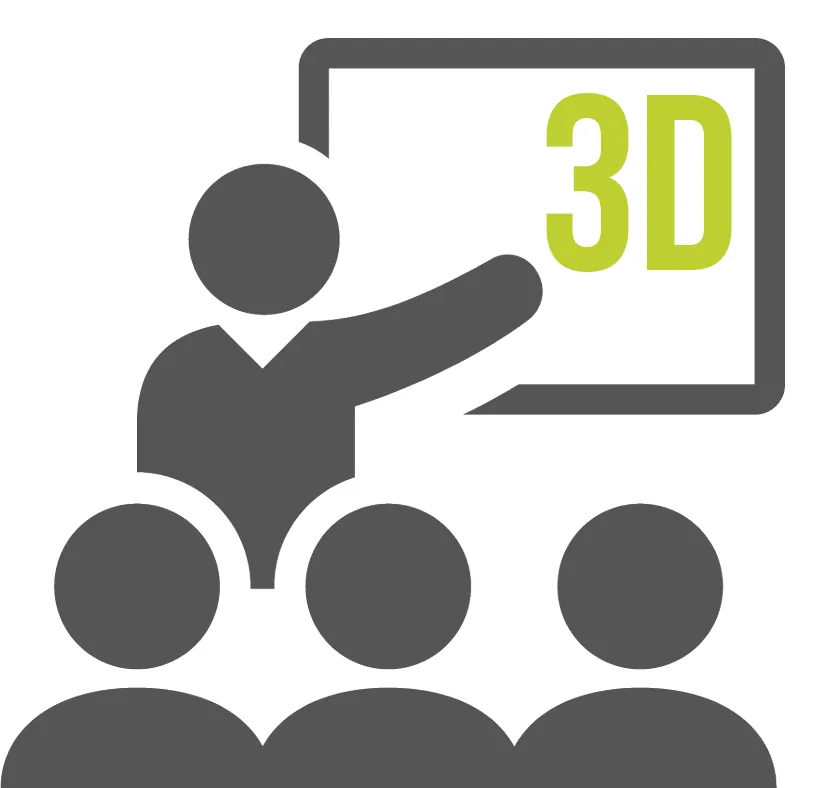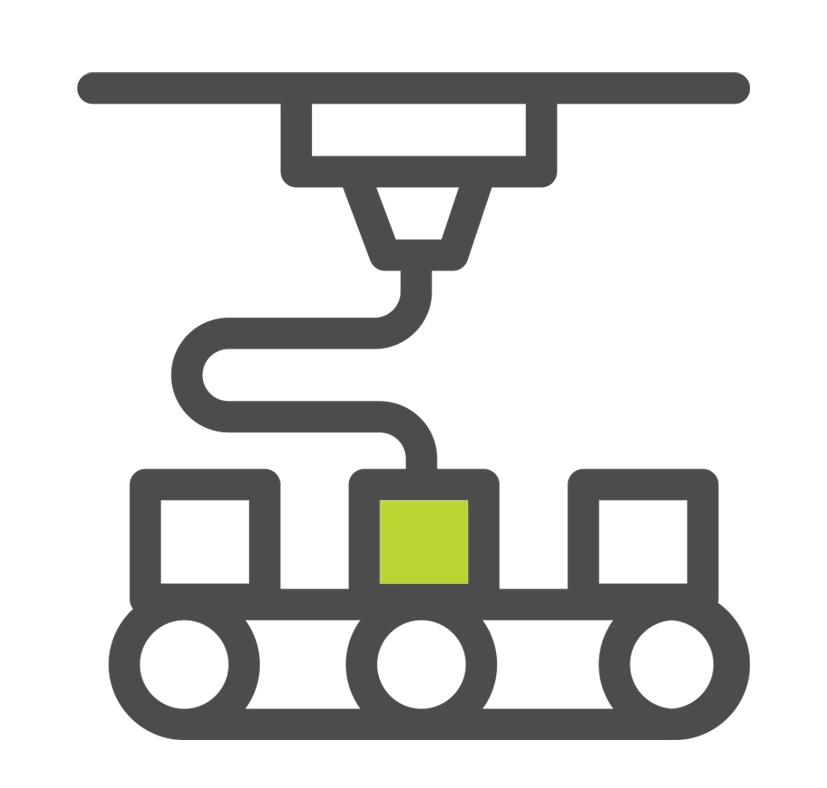STRATASYS J750 / J735 3D PRINTERS
Multi-Material and Full Color 3D Printing
 Now Serving US & Canada
Now Serving US & Canada

The Most Versatile 3D Printer Available
The Stratasys J750 and J735 3D Printers are the only printers able to produce the boldest full color, multi-material parts in a single print. This full-color multi-material 3D printer combines imaging, ingenuity, research and resolve to the additive manufacturing market. Your team will be able to model and 3D print the most complex prototypes and parts possible.
Utilize the accuracy, reliabiility, precision and repeatability that you have come to expect from Stratasys 3D printers. Industries such as; medical, aerospace, consumer goods and high-tech rely on the versatility of the Stratasys 750 3D printer for their additive manufacturing and prototyping needs.
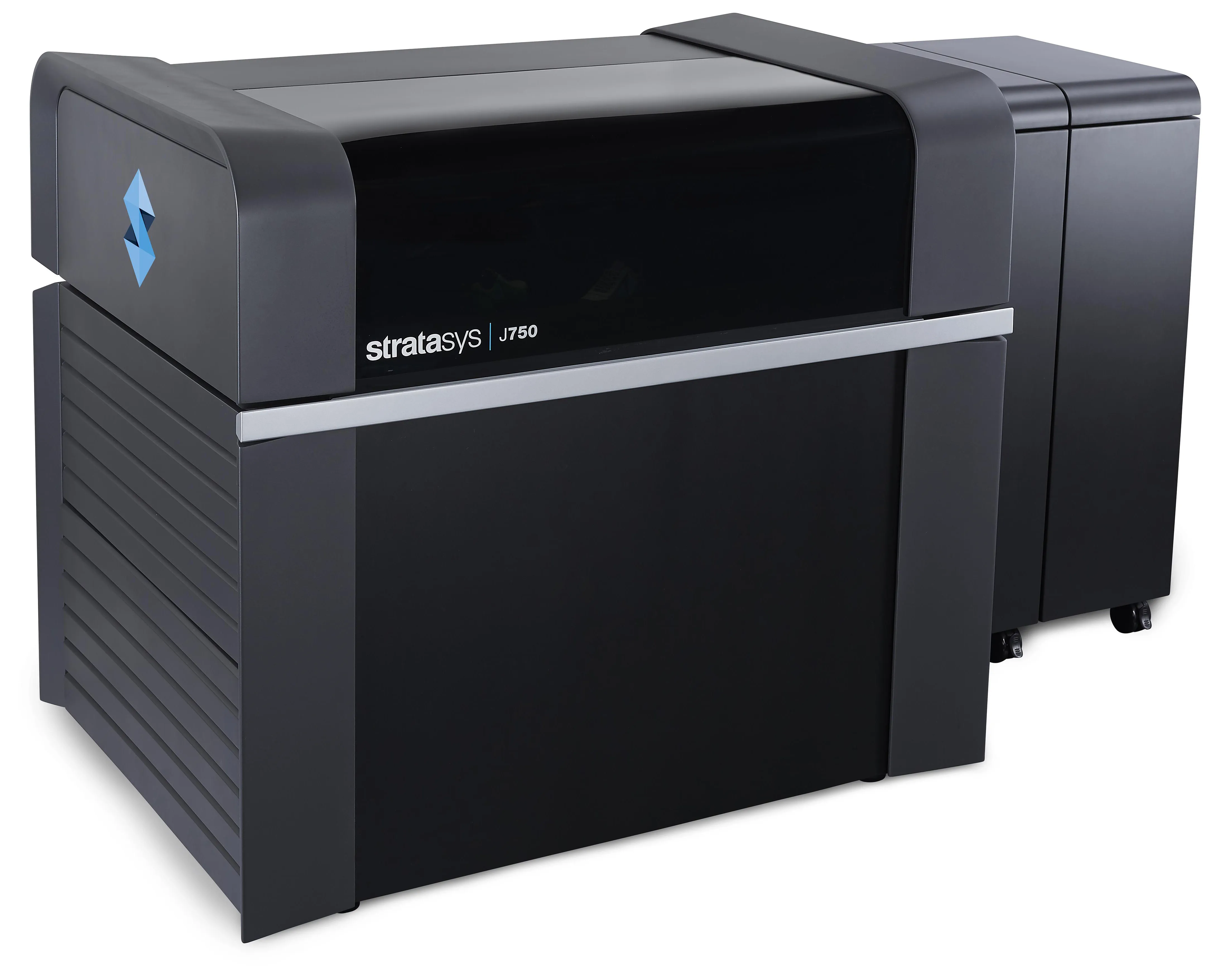


New Vivid Colors
VeroMagentaV and VeroYellowV
The Stratasys J750 3D Printer now offers the ability to print in true red, orange, and yellow with VeroMagentaV 3.6kg and VeroYellowV 3.6kg. This newly expanded color palette can range from 340,000 to over 500,000 different
Pantone Approved
colors, textures, gradients, transparencies and durometers. This new advanced material formulation delivers superior color accuracy and translucent colors with transparency.
Additionally the Stratasys 750 lets you see and feel first hand the Enhanced realism of simple to the most complex of parts. No extra steps and stipulations are needed once a model is printed and enable more use cases for a wide range of applications. Check out the many advanced features of the Stratasys J750 below.
Old J750 Color Profile

New J750 Color Profile

“We’re extremely grateful to have GoEngineer as the service vendor for our Stratasys machine! They have been nothing short of excellent in all of our communications with them. Thank you for supporting the work we do here at NASA”
– Alex Mazhari, NASA
E6 Print Heads
The Stratasys J750 3D printer is equipped with newly designed E6 print heads. The new E6
improves lifespan by 40%
of print heads. This creates a more dependable and accurate print head performance.
Improved print head assembly helps reduce separation of print head components. As well as Real-time print head status log – print time, and materials. Also updated is the J750 filter, offering 20 to 30 micros of filtration. This gives the print heads a Uniform healing across all nozzles to ensure consistency and precision for your parts.
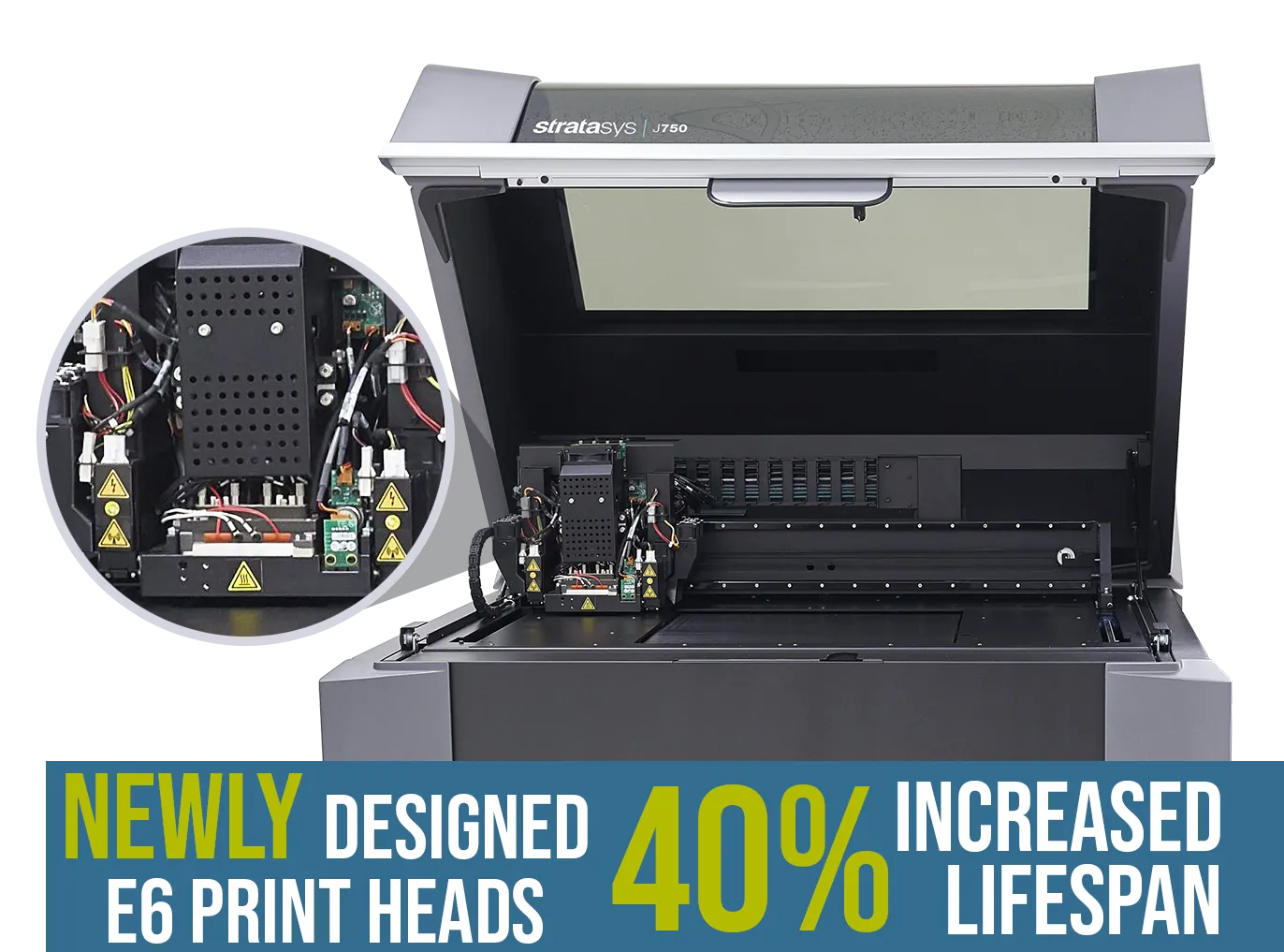

Soluble Support
The newly formulated soluble support ‘SUP706B’ eliminates roller bath leakage, as well as support leakages within complex model prints. SUP706B replaces the former ‘SUP706’ on both the Stratasys J750/J735 models. This update improves print quality all around for multi-material and full-color 3d printed parts.
Transparency
With the Stratasys J750 you can print protoypes and parts with transparency CMYKBT (T=VeroClear) and full color at the same time. Additionally, you can utilize multi-materials to ensure your 3D printed part is as realistic as possible. This allows you to get a true visual look at complex models for diagnosis or production prototyping.
Whether you are recontructing a potential brain tumor, enchancing an intake valve or diagnosing a degenerative bone disease, the Stratasys J750 can ensure the proper visual 3D print replication can be achieved utilzing VeroClear technology for transparency to critical components of your 3D printed part.
“3D printing helped me take somebody from being inoperable to operable, and we saved her life.”
– Raymond P. Burke, M.D. Nicklaus Children’s Hospital / Cardiovascular Surgery
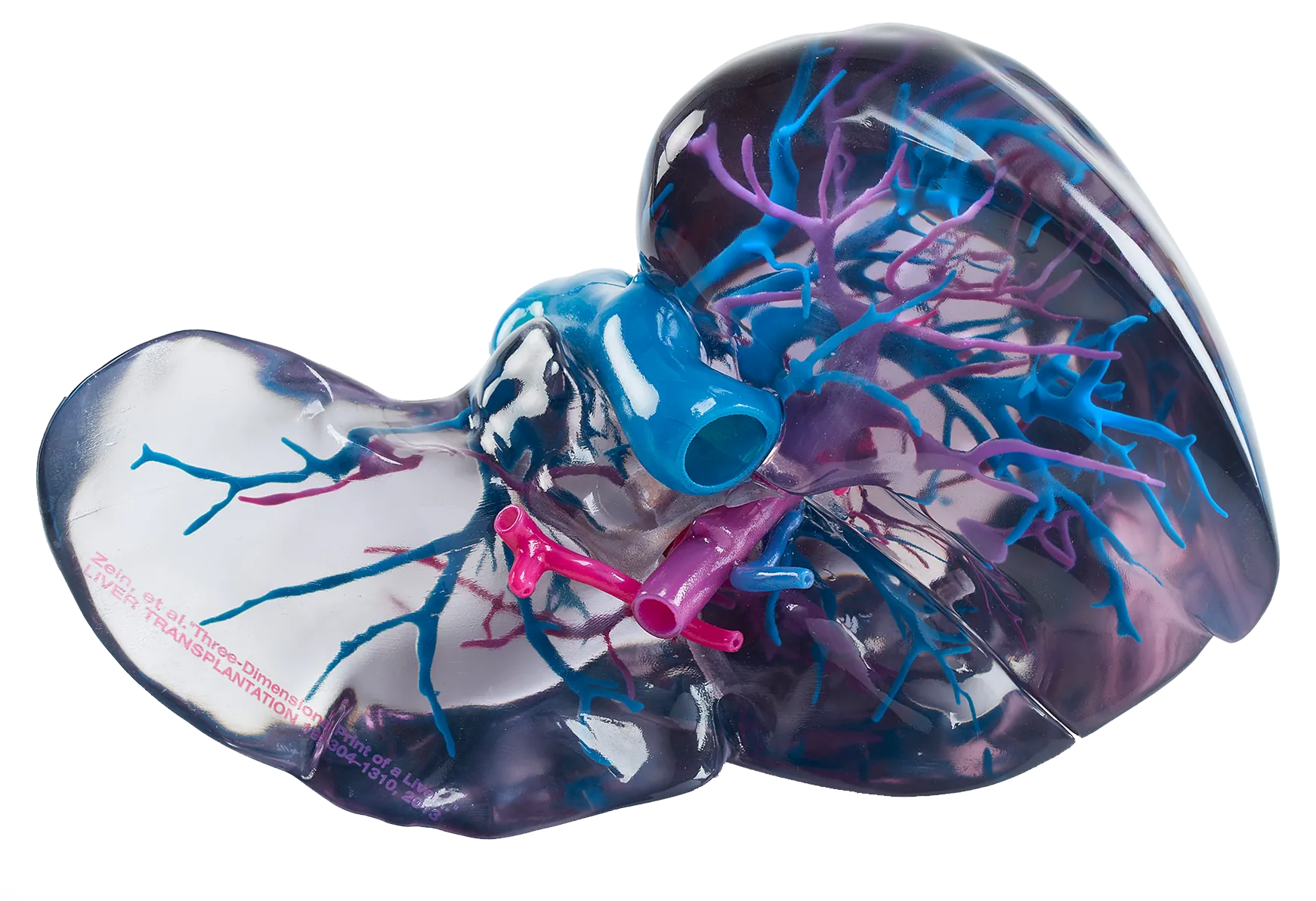

Textures
With the Stratasys J750 you can print protoypes and parts with an incredible array of characteristics so they look, feel and function like the future products you design them to be. The Stratasys J750’s VRML textures can create parts within the same print file. This enables you to see and feel realistic textures, images and graphics on a physical part with multi-materials and full-color. All of this in a single print operation with minimal to no finishing steps like painting, sanding or assembly.

Materials
The Stratasys J750 & J735 can create the most realistic multi-material parts in just one cycle.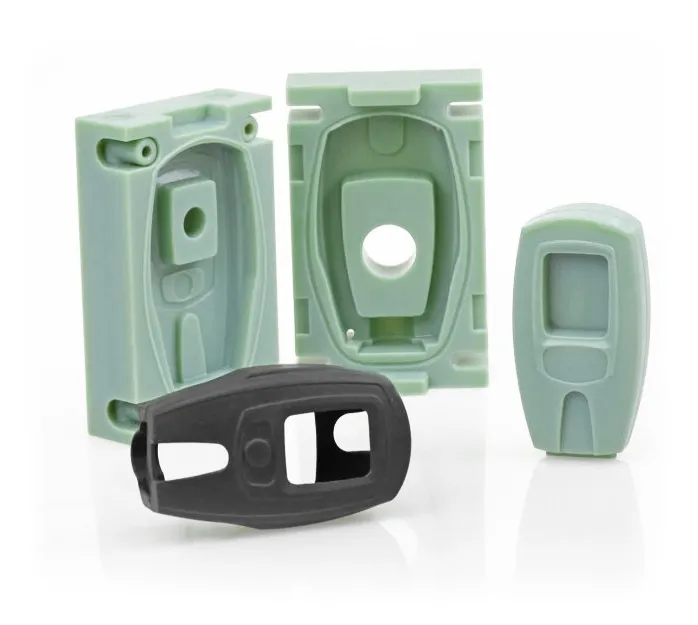
Digital ABS
Simulate production plastics for rapid tooling and prototyping with photopolymers that simulate a range of durable simulated production plastics. Digital ABS and Digital ABS2 materials create realistic, precise tools and prototypes that are also tough and heat resistant. Digital ABS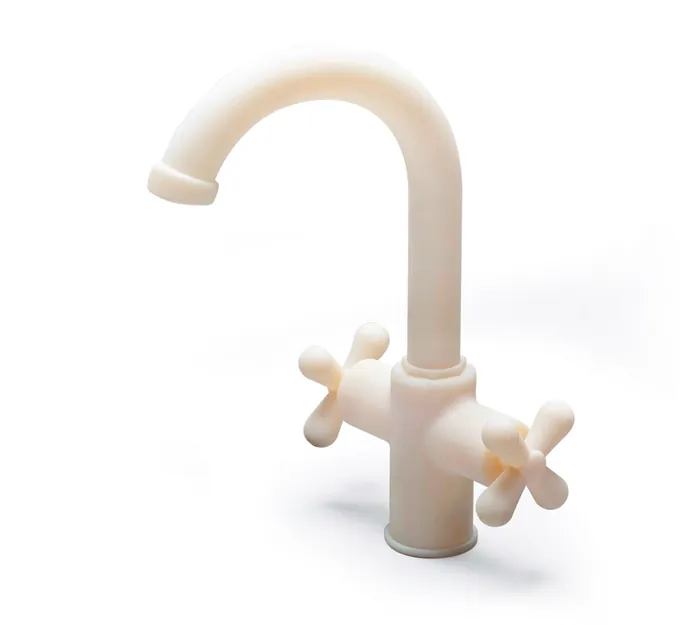
High Tempurature
High Temperature heat-resistant material simulates the thermal performance of standard plastics and is ideal for thermal testing of static parts. The High Temperature PolyJet photopolymer can be combined with Rubber-like material to create a versatile range of materials with adjustable properties. High Tempurature
DurusWhite
Simulated Polypropylene material is tough, flexible and durable. It enables you to 3D print precision prototypes that look and behave like polypropylene. Rapidly create models to test form, fit and function for snap-fit assemblies, living hinges and durable housings and packaging. DurusWhite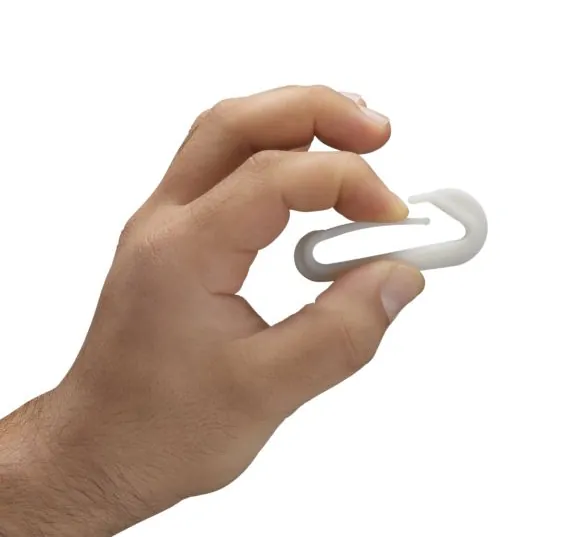
Endur
Endur (RGD450) is an advanced Simulated Polypropylene material that offers durability and a beautiful surface finish. Use it to quickly build tough prototypes for snap-fit components, hinges and other demanding applications. It comes in a bright, true white with fine resolution & smooth curves. Endur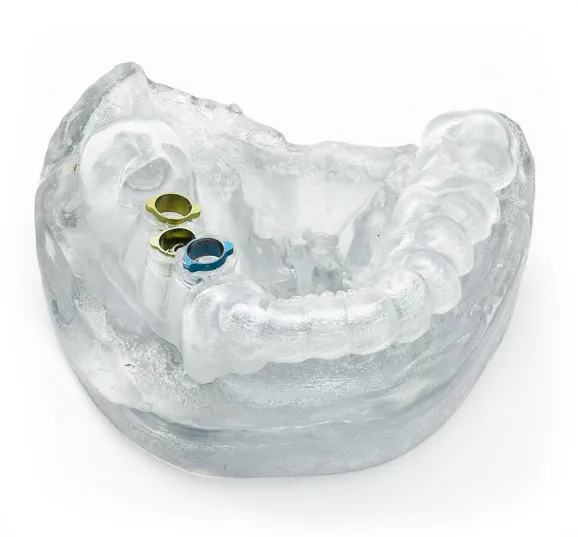
Bio Compatible
With the Bio-compatible material, you can rapidly prototype medical and dental products including dental delivery trays, surgical orthopedic guides and hearing aids. The medical rapid prototyping materials offer excellent visualization and great dimensional stability. Bio Compatible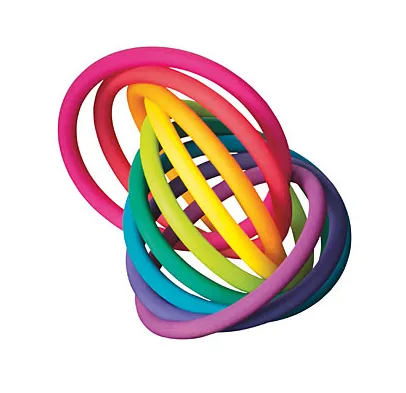
VERO Family
Combining dimensional stability and fine detail, Rigid Opaque materials simulate the appearance of production parts. With a combination of clarity, dimensional stability and surface smoothness, Transparent PolyJet photopolymer lets you prototype clear and tinted products.J750 / J735 Specifications
Model Materials
- Vero™ family of opaque materials including neutral shades and vibrant VeroVivid™ colors
- VeroFlex™ and VeroFlexVivid™ families of strong but slightly flexible materials
- Tango™ and Agilus30™ families of flexible materials
- Transparent VeroClear™ and RGD72
Digital Model Materials
- Over 500,000 colors
- Digital ABS Plus and Digital ABS2 Plus™ in ivory and green
- Rubber-like materials in a variety of Shore A values
- Translucent color tints
- User-developed digital materials with GrabCAD Voxel Print™
Support Materials
SUP706B™ (soluble)
Build Size
Stratasys J750: 490 x 390 x 200 mm (19.3 x 15.35 x 7.9 in.)
Layer Thickness
Workstation Compatibility
Network Connectivity
System Size and Weight
Material Cabinet: 670 x 1,170 x 640 mm (26.4 x 46.1 x 25.2 in.); 152 kg (335 lbs.)
Operating Conditions
Power Requirements
220–240 VAC, 50–60 Hz, 7 A, 1 phase
Regulatory Compliance
Software
Build Modes
High Quality: up to 6 base resins, 14-micron (0.00055 in.) resolution
High Mix: up to 6 base resins, 27-micron (0.001 in.) resolution
Accuracy
Software
GrabCAD Print

GrabCAD Print makes 3D printing easy, with thoughtful features:
- Automatically corrects files and reduces print time with automatic tray arrangement.
- Calculates the time and material resources needed for production before printing.
- 3MF file supported – significantly simplifies color assignment in your workflow.
- New feature alerts the user if there has been cross-contamination with a biocompatible material.
- Schedule and monitor the print job remotely from your mobile device or browser.
- Get automatic alerts remotely when the job is printing and finished.
Frequently Asked Questions
ADDITIONAL 3D Printing RESOURCES
AWARD-WINNING TECHNICAL SUPPORT
GoEngineer’s extensive technical knowledge can assist with your additive manufacturing needs. Our Award winning team is ready to help. Reach out and see why GoEngineer is the #1 reseller of SOLIDWORKS and Stratasys systems in the world!
3D Printing Courses
Learn to utilize all features and tools of Stratasys commercial 3D printers with GoEngineer additive manufacturing on-boarding training and 3D printing courses. Take advantage of our 3D printing team of experts to help launch all your 3D printing capabilities.
3D PrintING SERVICES
No matter the size, quantity, or complexity of part(s) needed, GoEngineer can help you! Take advantage of our 3D Printing Services to help your organization produce the best parts and prototypes available on the market.
Additional Resources
Take Advantage of GoEngineer’s Extensive Knowledge Base and Resources

Find a Solution
Our robust Knowledge Base contains over 12,000 resources to help answer your product design questions. From basic CAD questions to in-depth guides and tutorials, find your solution here. Find a Solution

PROFESSIONAL TRAINING
Improve your skills with professional training and certifications in SOLIDWORKS, CAM, 3D Printing, and 3D Scanning offered four ways: self-paced, online, on-site, or in-classroom. Certified Training Courses

BLOG
#1 Technical Resource Worldwide - Right at your fingertips. Search or browse through hundreds of SOLIDWORKS tips & tricks, additive manufacturing product developments, announcements, how-to guides, and tutorials. Blog

YouTube Channel
Our YouTube channel hosts hundreds of educational tutorials, product demonstrations, recorded webinars, and best practices for all of our products and services. GoEngineer's YouTube Channel
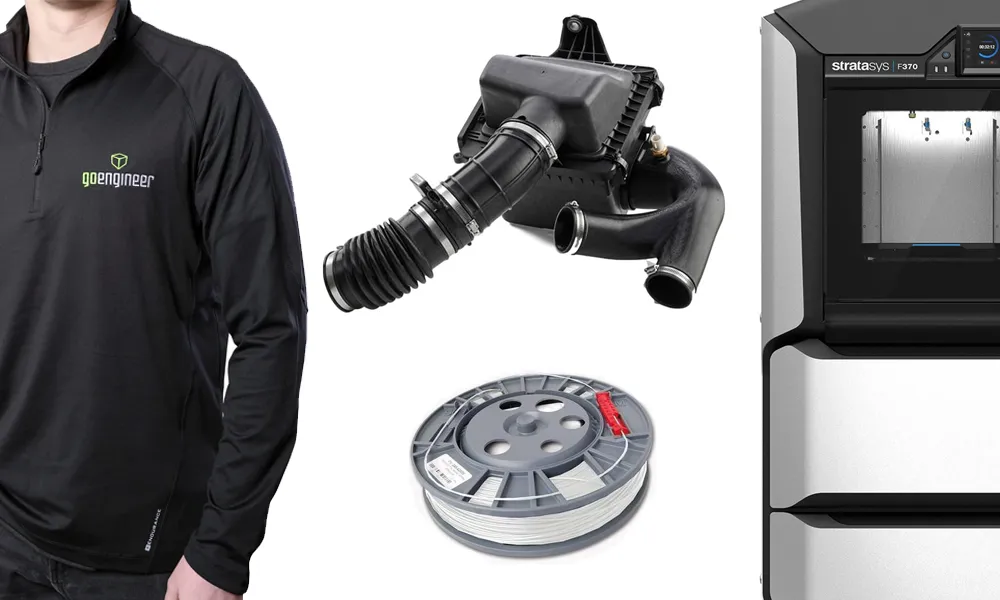
ONLINE STORE
Order 3D printing materials and consumables, enroll in SOLIDWORKS training classes, and buy official GoEngineer gear directly from our online store. Online Store
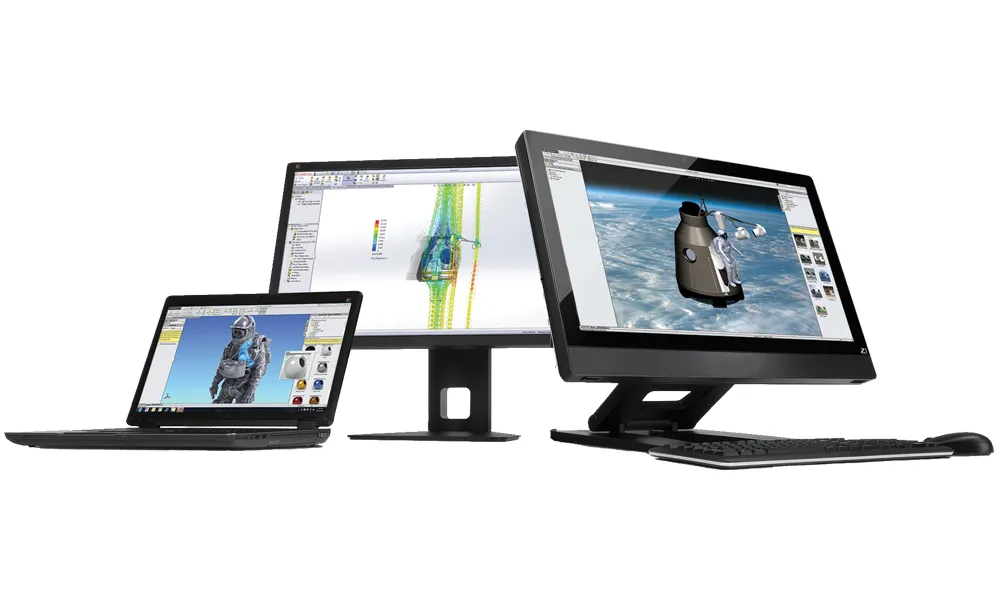
WEBINARS
Our engineering webinars are hosted by some of the top experts in the industry. They are always recorded, always free, and always offer a live Q&A. WEBINARS
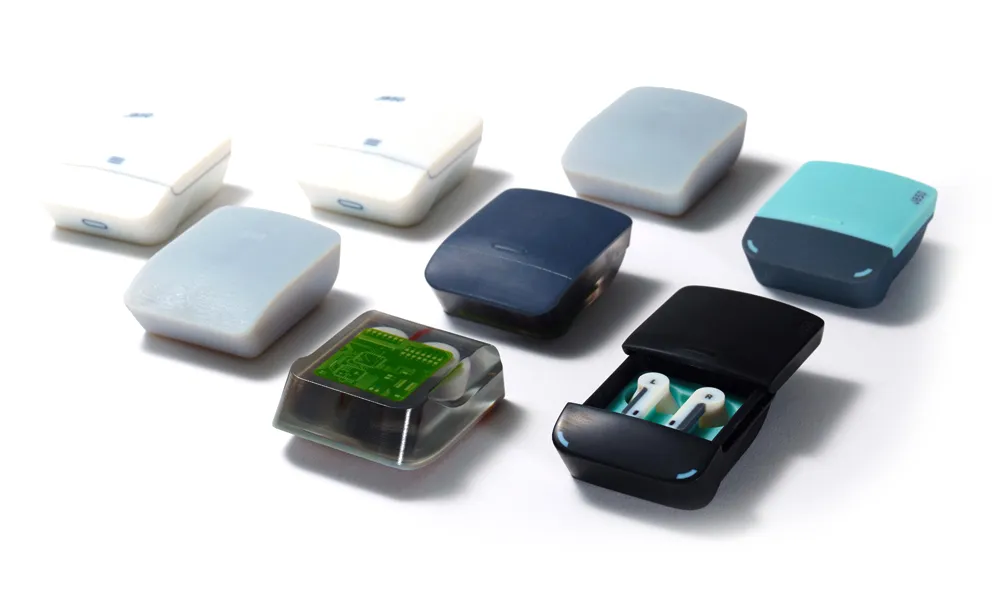
3D Printing Services
Need to 3D print a part? Our Additive Manufacturing experts will 3D print your part and deliver it to you using the latest technology on one of our professional FDM, PolyJet and SL 3D printers. 3D Printing Services


